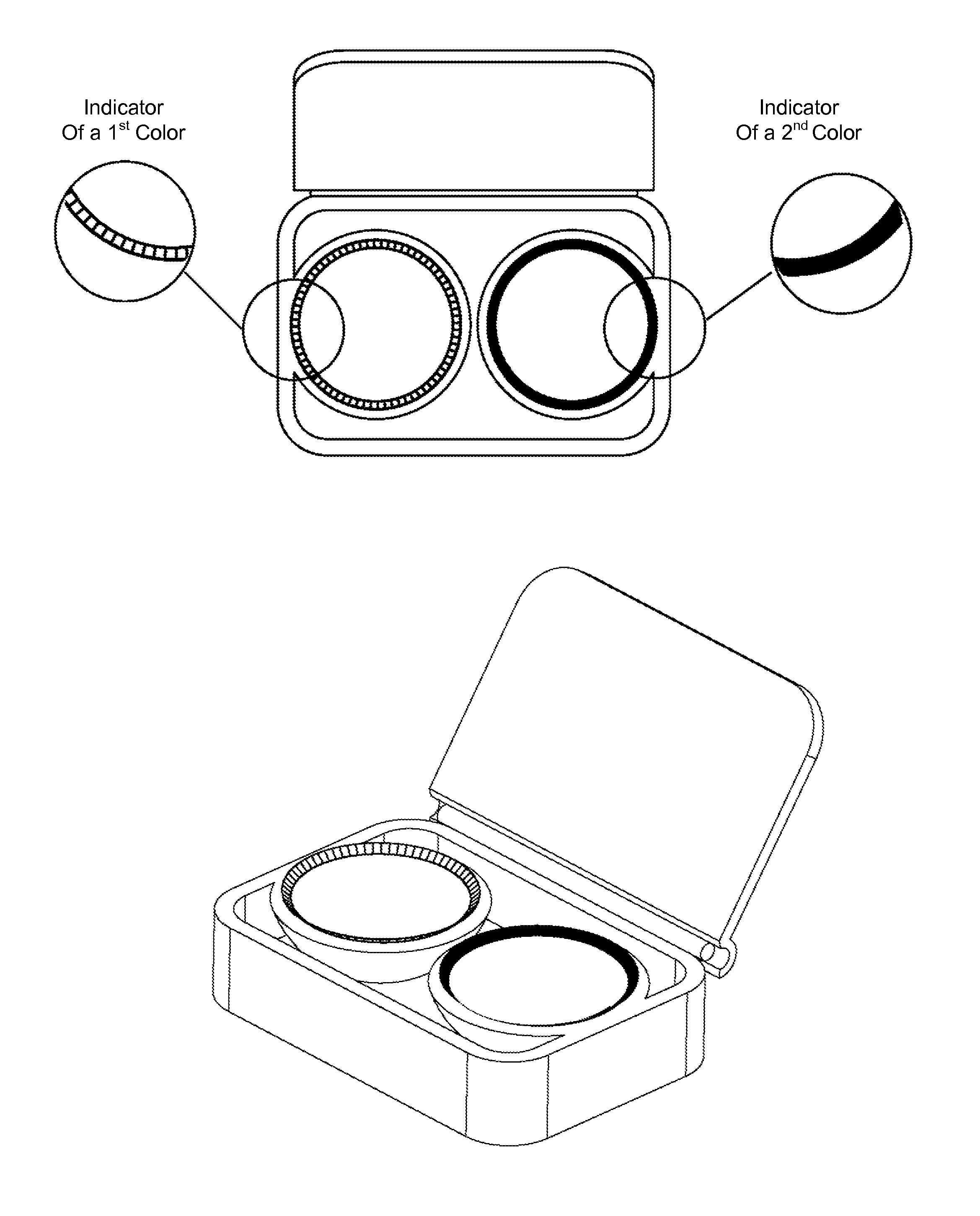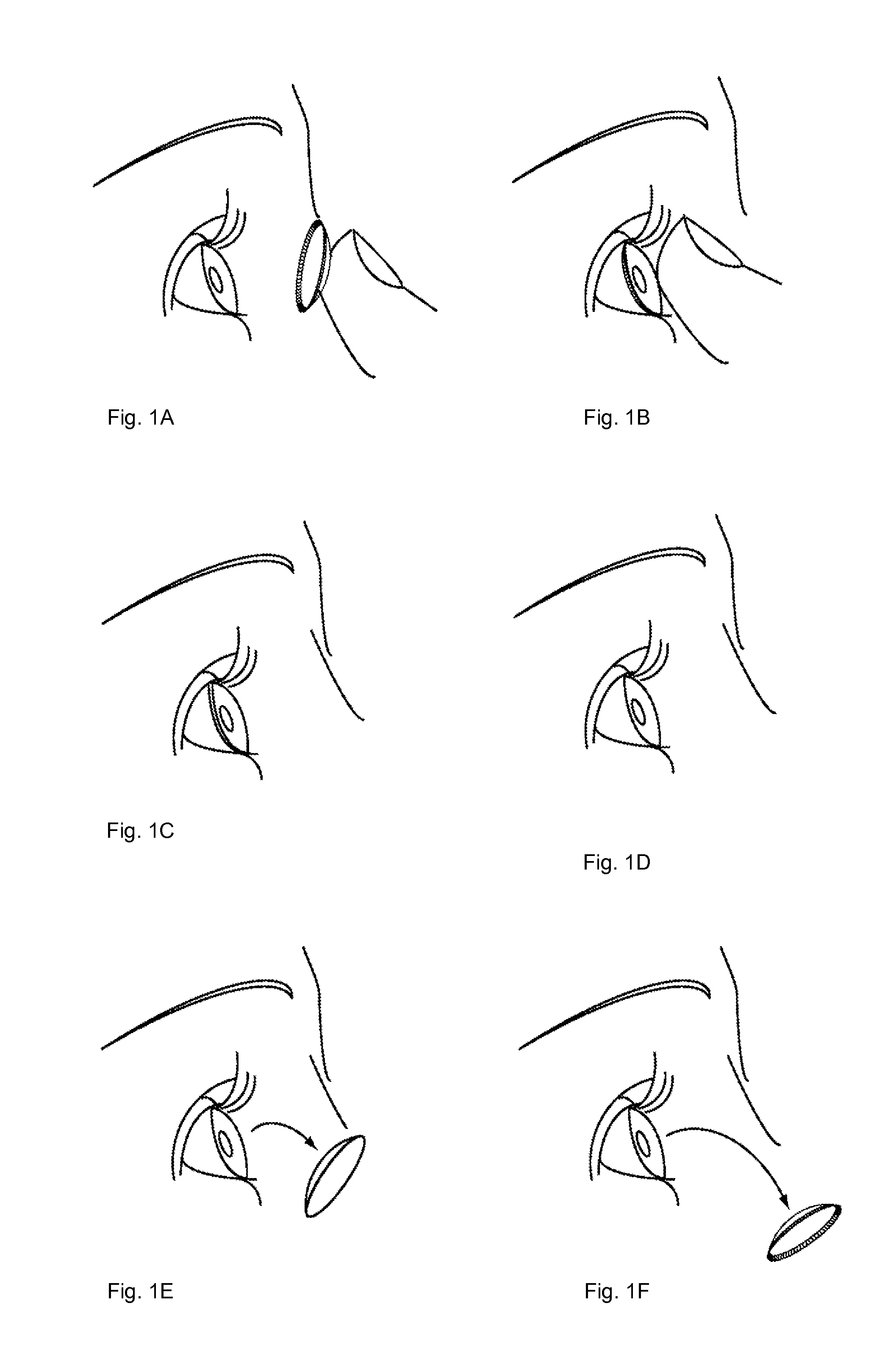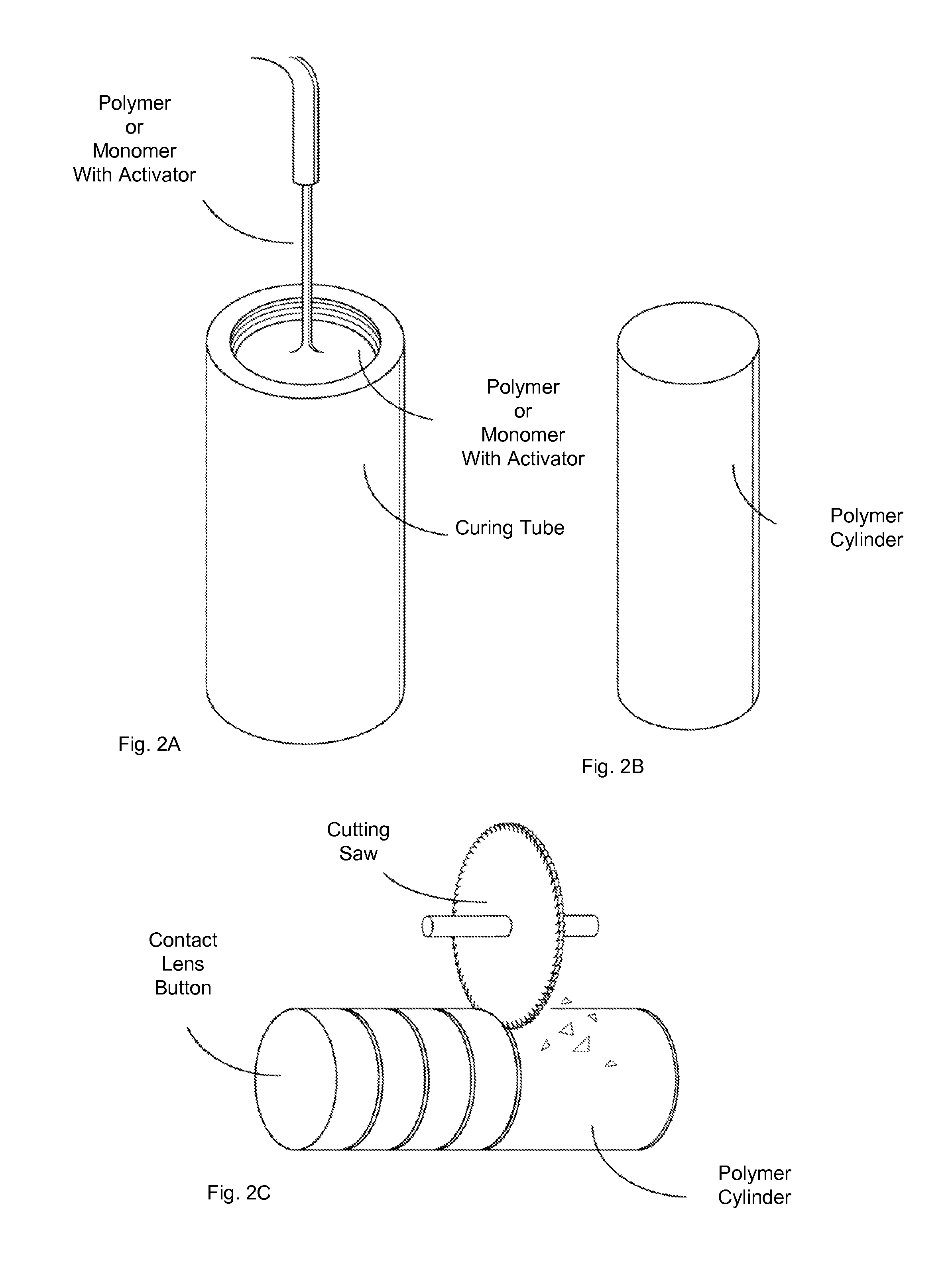Methods materials and systems for producing a contact lens and contact lenses produced using said methods materials and systems
a technology of contact lenses and materials, applied in the field of optometry and/or ophthalmics, can solve the problems of light weight and virtually invisible, adverse clinical events, and the inability to absorb such compounds by other types of contacts,
- Summary
- Abstract
- Description
- Claims
- Application Information
AI Technical Summary
Benefits of technology
Problems solved by technology
Method used
Image
Examples
Embodiment Construction
[0037]The present invention includes methods, material and systems for producing a contact lens and contact lenses produced using said methods, material and systems. A contact lens according to some embodiments of the present invention may include an extra-ocular indicator (“EOI”) adapted to alter in color upon removal of said lens from an eye. The EOI may be adapted to become relatively more visible (e.g. bright color) when the contact lens is outside an eye than when said contact lens is placed in an eye. The EOI may be at least partially composed of a thermochromic or thermochromatic pigment which changes color based on temperature. The EOI may be at least partially composed of a pH responsive pigment which changes color based on pH values of its surroundings. The EOI may be at least partially composed of a pigment adapted to alter in color upon coming in contact with an organic or biologically produced matter (e.g. carbon dioxide, tear duct fluids, etc.).
[0038]According to some ...
PUM
 Login to View More
Login to View More Abstract
Description
Claims
Application Information
 Login to View More
Login to View More - R&D
- Intellectual Property
- Life Sciences
- Materials
- Tech Scout
- Unparalleled Data Quality
- Higher Quality Content
- 60% Fewer Hallucinations
Browse by: Latest US Patents, China's latest patents, Technical Efficacy Thesaurus, Application Domain, Technology Topic, Popular Technical Reports.
© 2025 PatSnap. All rights reserved.Legal|Privacy policy|Modern Slavery Act Transparency Statement|Sitemap|About US| Contact US: help@patsnap.com



